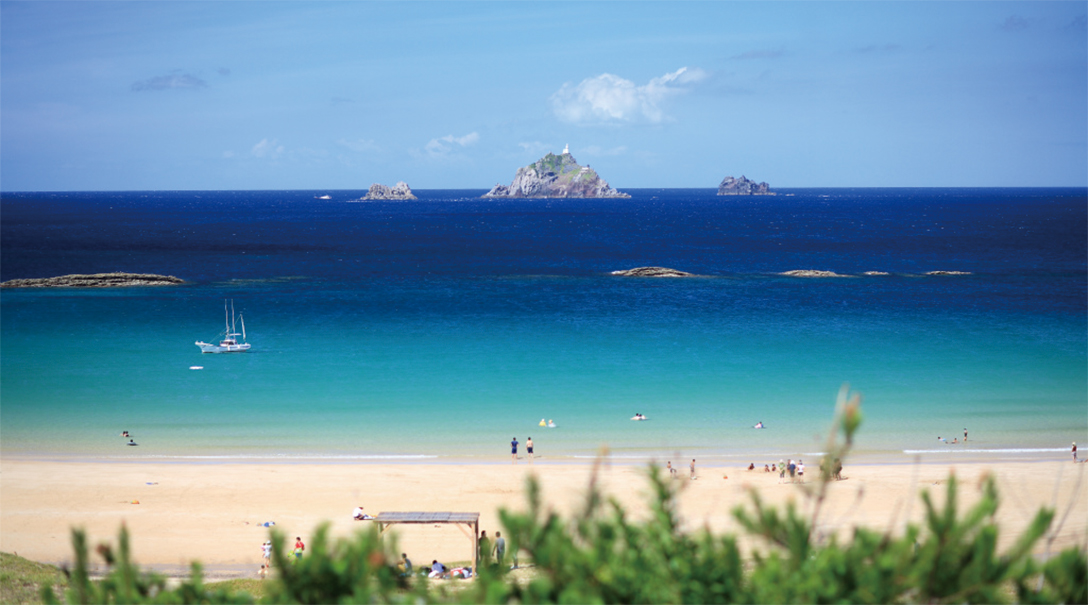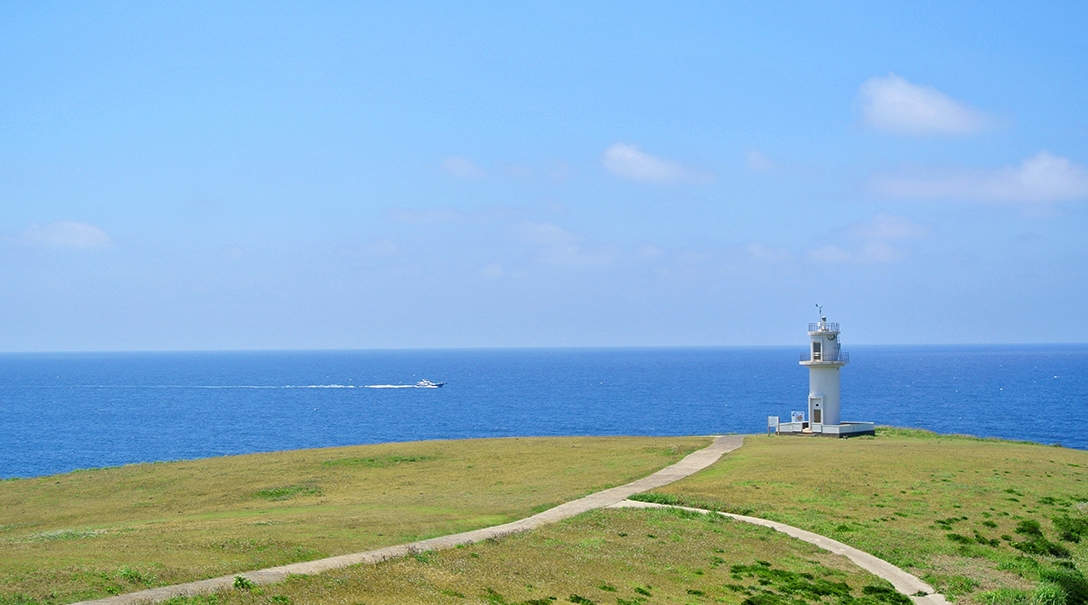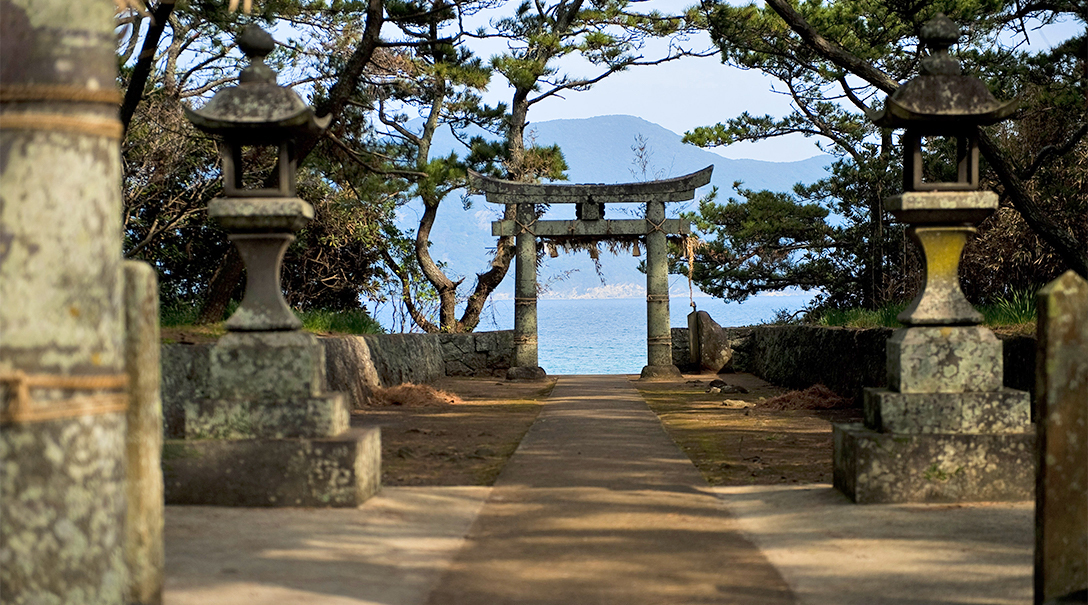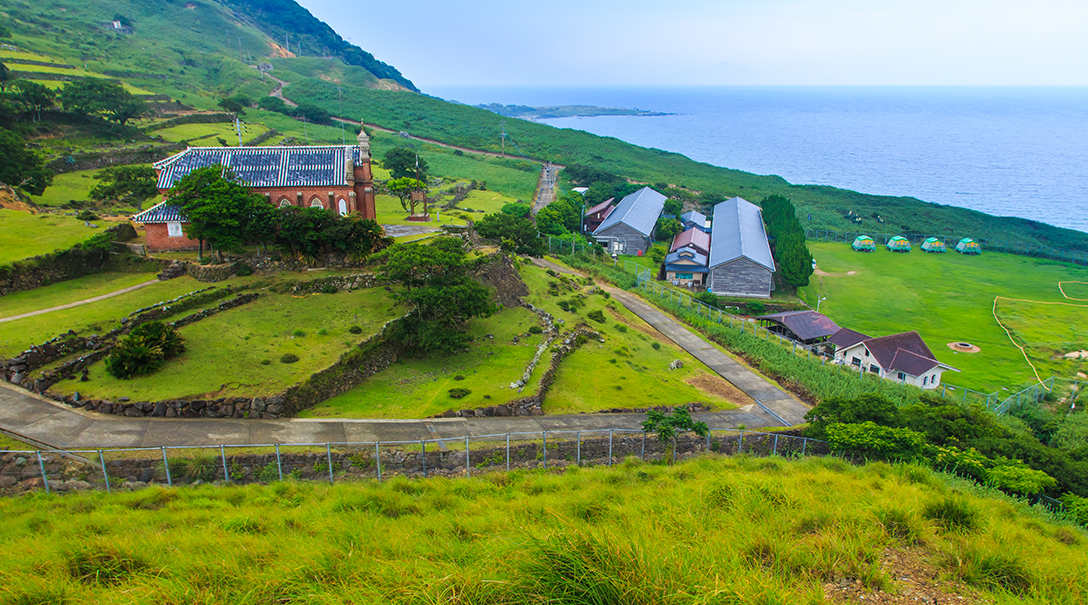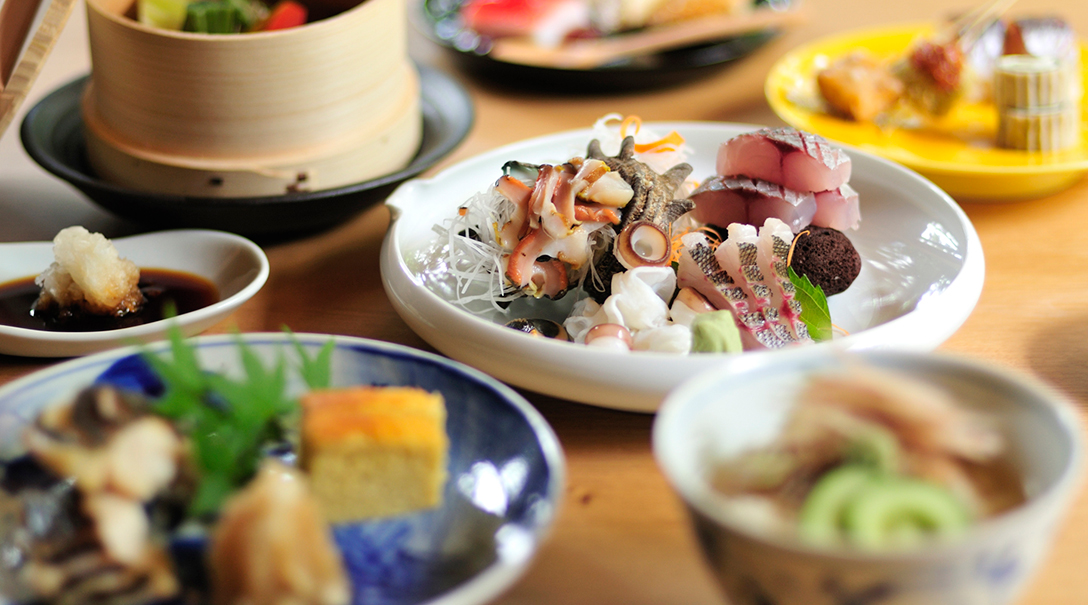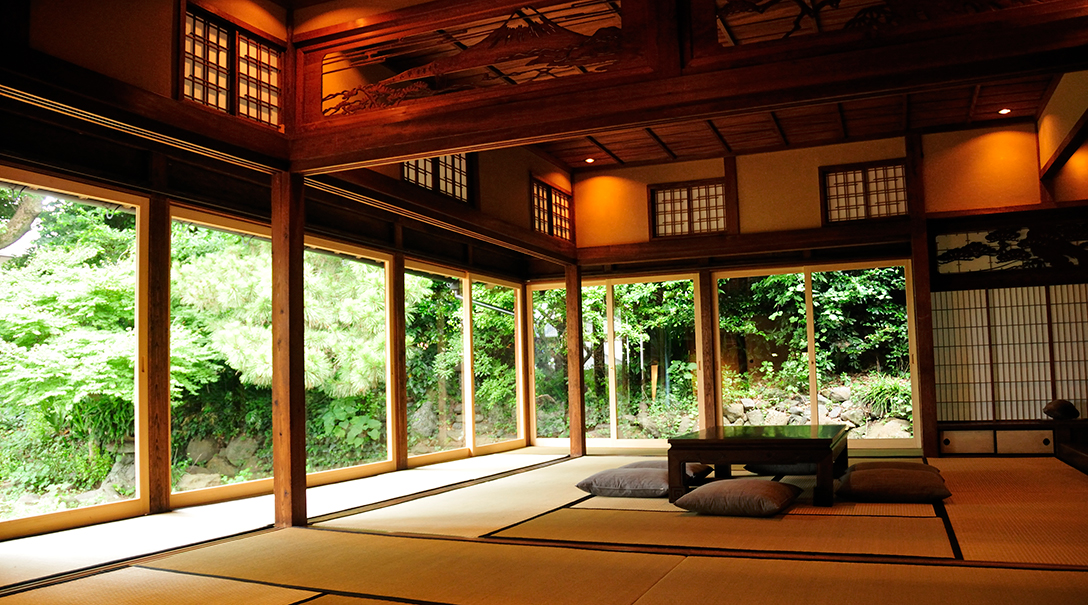A heartwarming trip from Sasebo to Goto.
Trips can serve many purposes, however one of them may be to distance oneself from daily life and take time for self-reflection. How about boarding a ship bound for Goto from the Kujirase Wharf behind Sasebo Station, choosing to cross the sea at a leisurely pace on a boat voyage.
An island where God lives in every corner, Uku
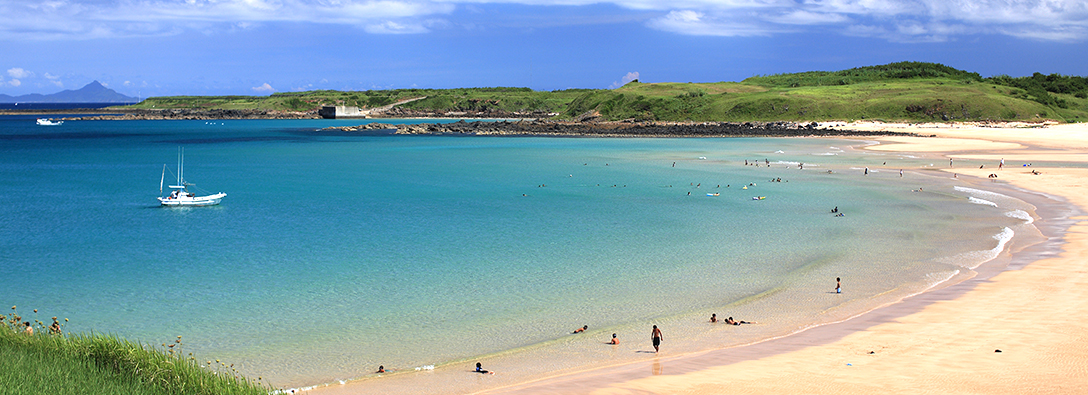
Located at the northernmost point of the Goto Islands, Uku Island has a circumference of about 38km. While you can walk around the entire island in several hours, its attraction is endless. The Hira district of this fisherman’s town is watched over by a colorful statue of Ebisu (God of Fisherman) presents picture perfect scenery from every angle, and is to resemble the Onomichi landscape. The lighthouse on the cape, where the line of the horizon appears to curve, has appeared in a commercial for a major Japanese company, and blends into an everyday landscape irresistible to camera enthusiasts. However the greatest attraction of this island is the warmth with which the islands welcome visitors. Many travelers depart the island saying "see you again". With a Japanese style Halloween, the "Odaishi-sama Meguri" in spring, a summer night time festival during which people shout "Hiyo Hiyo" towards the sea, it is an island where you can meet God all year round. Please also enjoy the delicious island foods.
The highlights of Uku
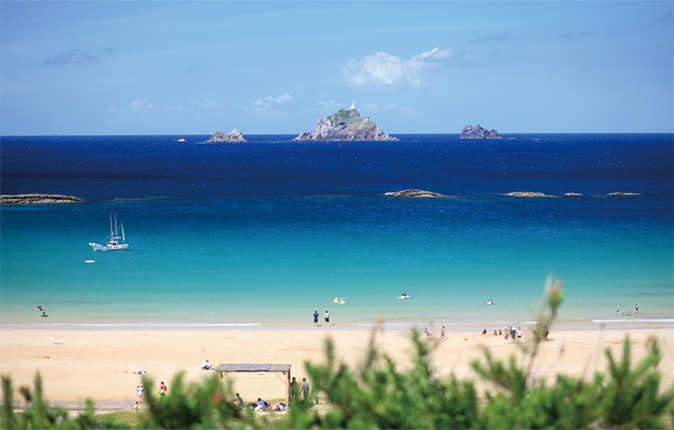
Ohama Beach
Uku island’s largest beach, with a total length of 600 meters. Recognized as part of the Saikai National Park, the sand beach and nearby sand dunes are inhabited by many rare plants and insects. Selected and recognized by the Ministry of the Environment as 100 best beaches, the sea here boasts the highest level of transparency of Nagasaki Prefecture.
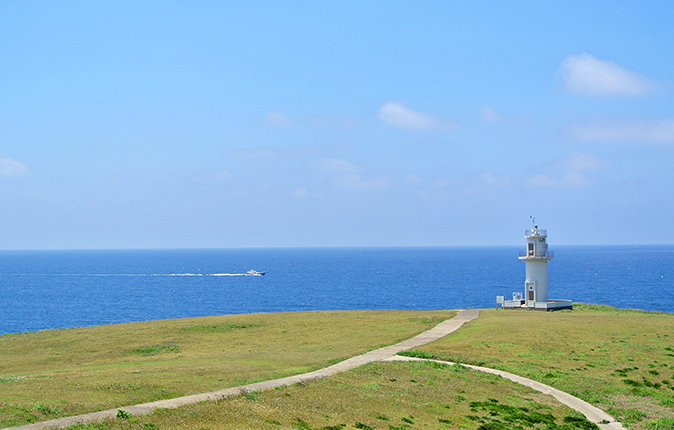
Nogata Coast(Tsushimase Lighthouse)
In the vicinity of the cape at the northernmost tip of Uku Island where Tsushimase Lighthouse stands, there lies a peaceful landscape that a herd of Goto Beef cattle grazing on the grass. The green grass and the white lighthouse making a beautiful contrast with the blue ocean behind, it is a precious sight of Uku Island.
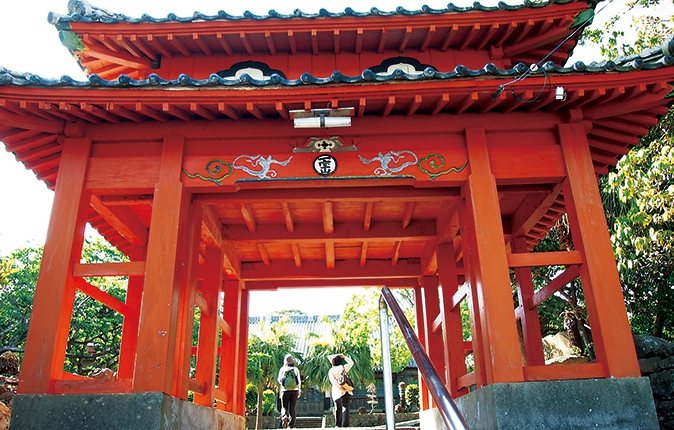
Toukouji Temple
The temple was built as a Bodhi Temple in 1187 (Bunji 3) after the arrival on the island of Taira-no-iemori. Passing beneath the crimson gate and walking along the main hall, you will find a mausoleum built for the seven generations of consecutive lords. In addition, within the main worship hall, rest a statues of "Enma Daioh" and "Jyuuou" donated in 1740 by the whalers.
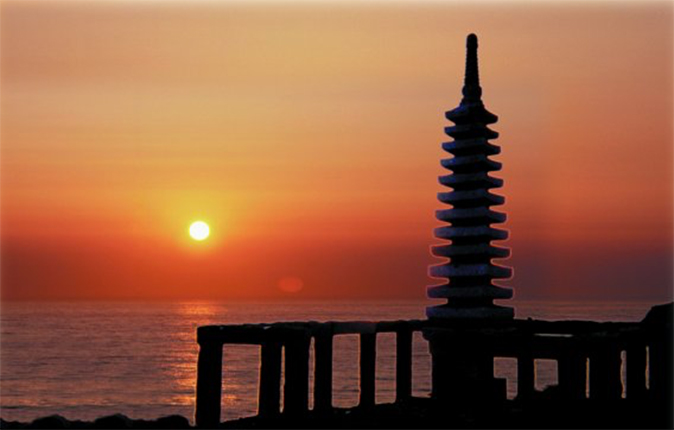
“Funakakushi” the place where Taira-no-iemori came ashore
The location that Taira-no-iemori is said to have hid his boat after crossing to Uku Island. While the location is call "Funakakushi" (boat hiding) because it is where the boat was hidden, "quiet coves without waves" are collectively referred to as "Funakakushi" and as such similar place names exist throughout the country.
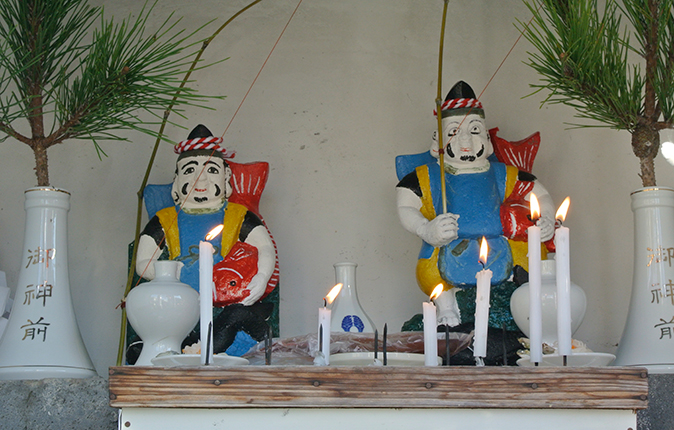
Kujira Ebisu
A statue of Ebisu riding a whale can be see in the Horiko district. Uku Island once prospered from whaling, and according to ancient documents of the time, a place recorded as "Horiko no Yamami" had a lookout post for whales swimming nearby. This is the only statue of Ebisu riding a whale on Uku Island.
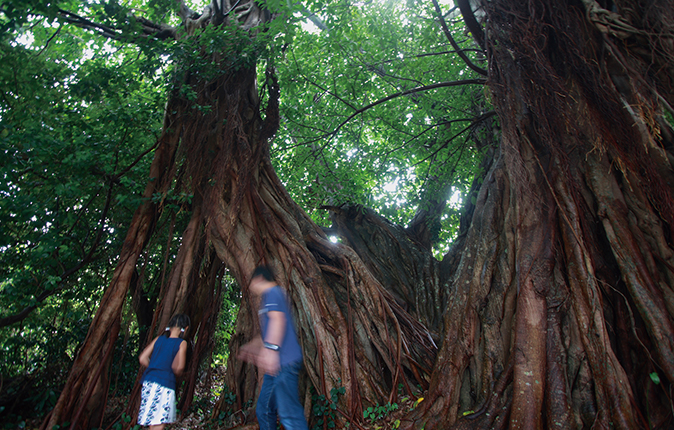
Giant Banyan Tree
With an estimated age of several hundred years, this is the largest size Banyan tree in the Goto Islands Measuring roughly 16m around the trunk, it continues to grow. There is a dynamic sense of life surrounding the tree, and this power spot is sure to bring out motivation.
Access to Uku
【Sasebo】→【Ukuhira Port】
◎High Speed Ship(20min) Kyushu Shosen…2 ships per day
◎Ferry(2 hour and 30 min. ~ 3 hours and 40 min.) Kyushu Shosen…1 ship per day
【Hakata】→【Ukuhira Port】
◎Ferry(4 hours and 10 min.)Departing 1 time every day at 23:45 for Fukue Island
Traveling as if you live there, Ojika Island
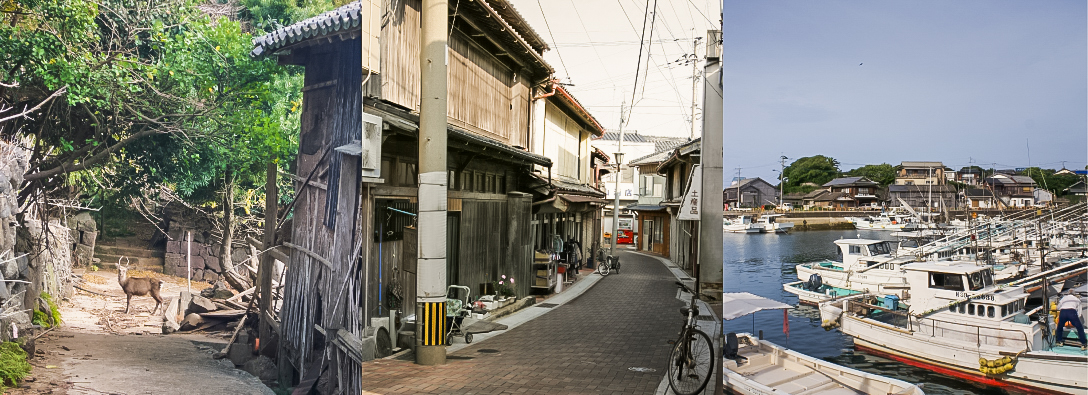
Arriving after roughly a three hour long boat ride from Sasebo Port are the Ojika Islands. Located at the northern end of the Goto Archipelago, they consists of 17 large and small islands. Having a population of approximately 2800 people, with a history of whaling, settlements remain on the main island of Ojika, Madarajima, Kuroshima, Oshima, Noshima and Mushima. The islanders maintain a self-sufficient life, continuing to make a living in fishery, agriculture and other traditional industries, while living in a manner honoring the gods of nature.
The letterpress printing shop located on the island is prized as a rare piece of cultural heritage, while the Noshima’s peanuts are so popular that they received orders from all over the country. On Nozaki Island, habitat to 400 wild Japanese deer, a closed wooden school building has been converted into accommodations and holds nature learning experiences. The former Nokubi Church, the first brick church architecture by architect Yosuke Tetsukawa is also an aspect of the Ojika landscape well worth taking in.
The highlight of Ojika island
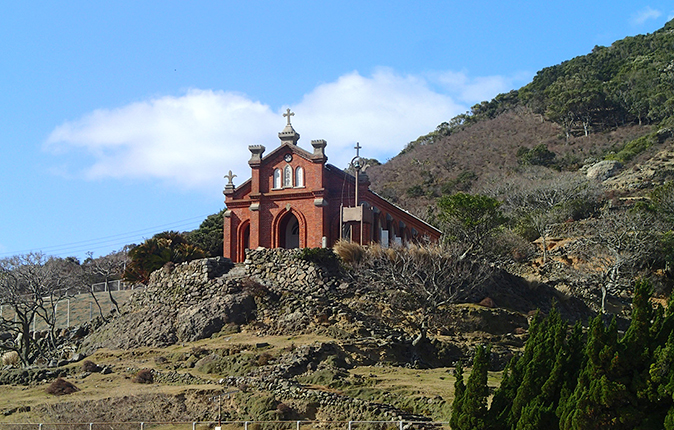
Nozaki Island
"Nozakijima" which looks almost like a scene from a foreign country, was once home to over 600 people, but has now become a mostly uninhabited island. The "Former Nokubi Church" part of the "Remnants of the Nozaki Island Settlement" is one of the sites of the "Hidden Christian sites in the Nagasaki and Amakusa region" and was built by the Hidden Christian islanders who cut down on their food and clothing and worked together in order to raise funds to fulfill their dream of having a church.
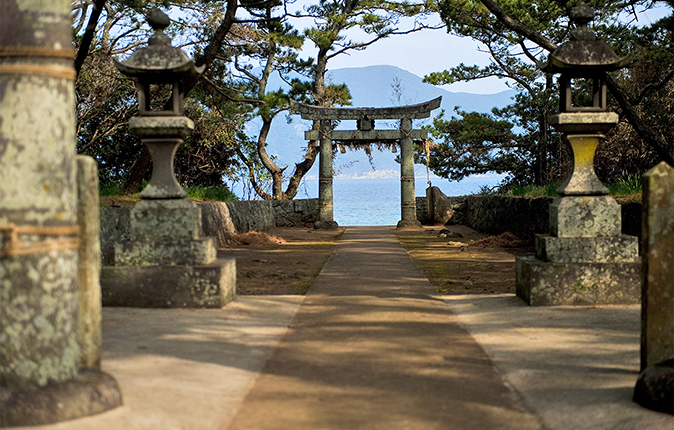
Jinokojima Shrine
The Jinokojima Shrine on Ojika Island is a shrine that stands facing the bay in front of it. Opposite it, on the coast of Nozaki Island stands its offshoot, the Okinokojima Shrine, built in 704 (Keiun 3). Following the changing of the route used by the fleet of the Japanese envoy to Tang Dynasty China in 702 (Taihou 3), changing to the southeastern route via the Goto Islands, these shrines, having been built around the same time, and facing and important point on the sea, are said to have been built to pray for the safety of the Japanese envoy’s fleet at sea.
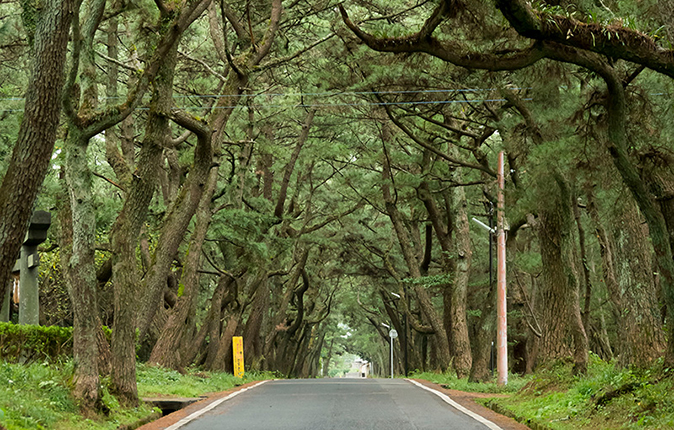
Himeno-matsubara
With rows of pine trees covering both sides of the road in a straight line for 450m, you can enjoy the feeling of being on an old highway.
It was voted one of "Japan’s 100 most famous pines" in 1958, and one of "Japan’s 100 best tree lined street views" in 1994.
Along the way you will find the Shishiku Shrine with its modern worship hall, while on a sidestreet their is also a heroes mound. In addition, here you can see what is said to be an old military ships anchor stone.
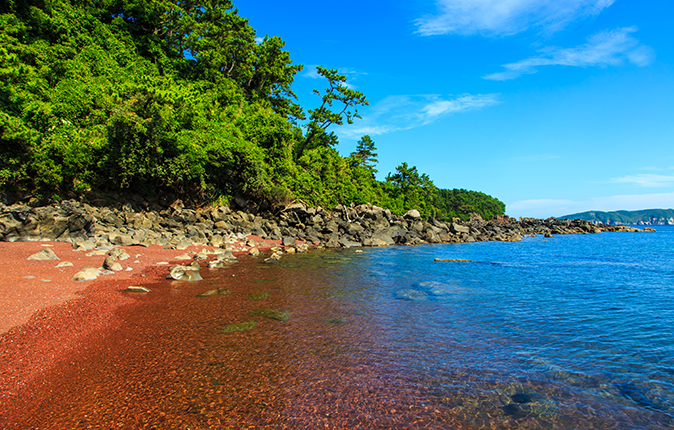
Akahama coast
The red sand and gravel of the coast line contained a lot of iron producing the unique color characteristic of a volcanic island. This red color, produced by a volcano, is the same as that at the Goryo cliffs in the northern part of the island, and indicates that Ojika Island was once a volcano. This is perhaps a place to enjoy the view more than swimming. It is located 20 minutes by bicycle from the port terminal.
Kominka Stay
The Kominka Stay are rental accommodations found in several of the settlements around Ojika Island, that allow for the rental of an entire house to one group at a time. having lived in harmony with the island, these over 100 year old traditional houses are the essence of Japanese beauty and taste, and have been renovated into comfortable spaces. Experience the splendor of these accommodations as they once more breath with the island.
A samurai residence or house overlooking the harbor of a fisherman’s town. Each of these houses is a record of the wealth and prosperity of the island, and an invaluable cultural asset of the present day island.
One house, one group rentals. Experience a leisurely pace in a good old "Island House".


